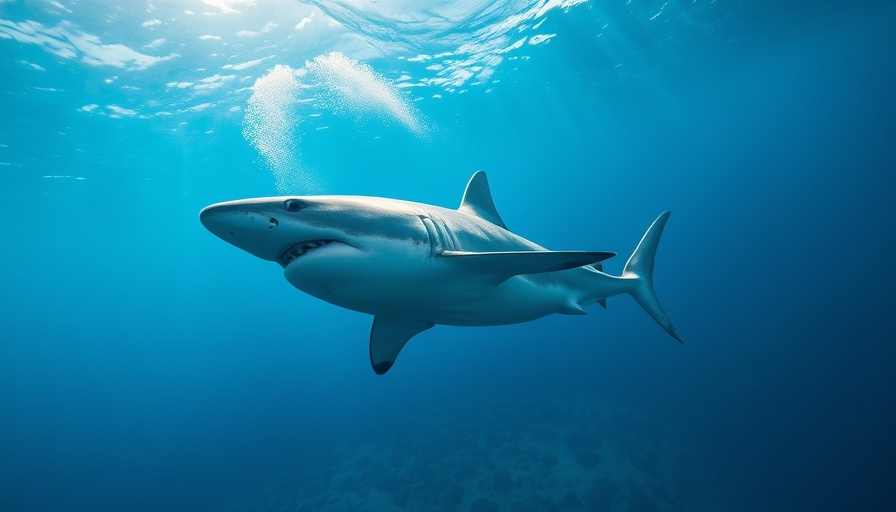
Uncovering the Mystery of Great White Sharks Off Maine Coast
In a remarkable phase of marine research, over the past thirteen years, more than 100 individual great white sharks have been detected swimming in the shallows of Maine's picturesque coast. The surge in sightings, particularly in these shallow waters, has spurred marine scientists to dive deeper into the behavioral dynamics of these majestic creatures. Collaboration among various organizations, including the Maine Department of Marine Resources and the Atlantic White Shark Conservancy, has fueled the quest to understand the implications of these sightings.
Understanding Sharks: Research Reveals Behavioral Insights
The data compiled through this extensive study is groundbreaking—it represents the first time researchers can track the behavior of white sharks in this specific region over a significant timeline. Launching in the wake of a tragic incident where a swimmer was fatally bitten, the study has gained critical urgency. By connecting data points from various shark tagging initiatives along the Eastern Seaboard, scientists have created an intricate picture of how these creatures are adapting to their environment in Maine.
Why This Matters: The Impact on Coastal Communities
For local communities, understanding the movement and behavior of great white sharks is not just an academic exercise—there are real implications for safety and marine management. Maine’s picturesque beaches not only draw tourists looking for recreation but also pose risks with the presence of these predators. As perceptions around shark presence shift—and with growing interest in marine conservation—it becomes crucial to balance safety with ecological awareness.
Technological Transformations in Shark Monitoring
The study employed innovative technology, like acoustic receivers placed strategically along Maine’s coast, enhancing data collection. This cutting-edge technology connects to a broader trend within marine research where data-driven insights are critical for making informed decisions impacting future marine policies and conservation efforts. It also mirrors the rising sector of marine technology that seeks to improve our understanding of oceanic ecosystems in real-time.
Making Waves: The Bigger Picture Around Shark Populations
The increase in white shark sightings is emblematic of larger oceanic changes driven by climate dynamics and their visual predator behaviors. Affluent professionals in sectors such as healthcare, finance, and sustainability must pay attention to these disruptive patterns as they hint at evolving trends in marine life that could affect fishing industries, tourism, and regional conservation efforts. The fact that more species are returning to areas where they had previously been scarce is a call to action for businesses involved in coastal development and sustainability initiatives.
In summary, the ongoing research into the migration of great white sharks in Maine not only enriches our understanding of these apex predators but also serves as a vital reminder of the changing landscape of marine ecosystems and the urgent need to balance growth with conservation efforts in our coastal communities. As this story unfolds, one thing is clear: Maine’s great white sharks are just the tip of the iceberg.
For continued updates on marine conservation trends and innovations, engage with local initiatives or research groups dedicated to preserving oceanic ecosystems, and stay informed about how these changes may affect our communities and environments.
 Add Row
Add Row  Add
Add 



 Add Row
Add Row 


 Add
Add 

Write A Comment